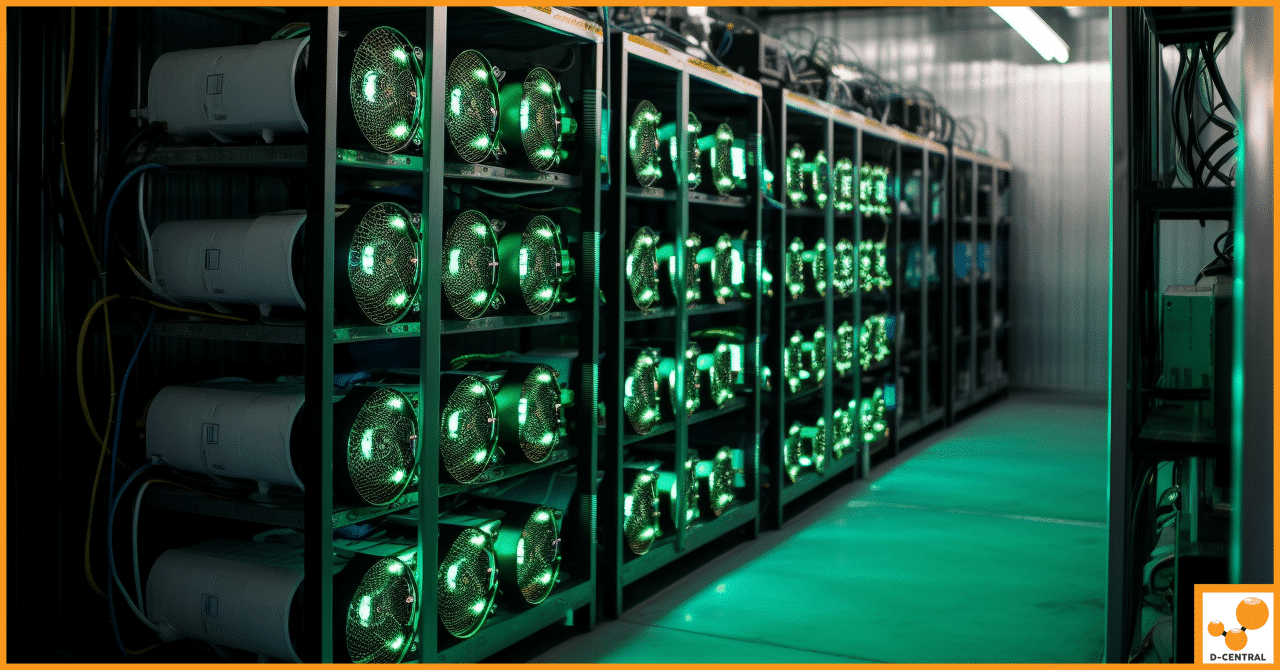In the rapidly evolving world of technology, understanding the nuances and capabilities of different computing hardware is crucial for optimizing performance across a wide range of applications. Among the key players in this domain are Application-Specific Integrated Circuits (ASICs), Field-Programmable Gate Arrays (FPGAs), Graphics Processing Units (GPUs), and Central Processing Units (CPUs). Each of these technologies serves distinct purposes, excelling in specific tasks while presenting limitations in others. This diversity underscores the importance of discerning their differences, as making the right choice can significantly impact the efficiency, cost, and outcome of technological projects.
ASICs, designed for highly specialized tasks, offer unmatched efficiency in their domain of application, making them indispensable in high-performance and high-volume scenarios. FPGAs, with their reconfigurable nature, provide a versatile middle ground, allowing for tailored solutions that can adapt to evolving needs. GPUs, initially developed for rendering graphics, have found a broader application base in parallel processing tasks, proving to be powerful tools in data-intensive computations. CPUs, the generalists of the group, offer broad compatibility and flexibility, capable of handling a wide array of tasks but often at the expense of the specialized efficiency found in the other technologies.
The relevance of these technologies extends across various fields, from telecommunications and consumer electronics to data centers and scientific research. However, their role in Bitcoin mining has particularly highlighted the need to understand their differences. Bitcoin mining, a process that involves validating transactions and securing the network while generating new bitcoins, requires substantial computational power. The evolution of mining hardware, from CPUs to the current dominance of ASICs, reflects a continuous quest for more efficient and effective solutions. This journey underscores the transformative impact of choosing the right technology, not only in mining but in the broader landscape of digital innovation.
Understanding the Basics
What is a CPU?
The Central Processing Unit (CPU) is often referred to as the “brain” of a computer due to its critical role in interpreting and executing most of the commands from the computer’s other hardware and software. A CPU performs basic arithmetic, logic, controlling, and input/output (I/O) operations specified by the instructions in the program. This versatility makes the CPU an indispensable component in virtually all computing devices, from desktops and laptops to smartphones and servers.
Key Characteristics:
- Versatility: Capable of performing a wide range of computing tasks.
- Architecture: Typically consists of a few cores optimized for sequential serial processing.
- Clock Speed: Measured in gigahertz (GHz), indicating the speed at which it can execute instructions.
Typical Applications:
- General-purpose computing, from running operating systems to various software applications.
- Complex decision-making and control tasks in embedded systems.
What is a GPU?
A Graphics Processing Unit (GPU) is specialized electronic circuitry designed to rapidly manipulate and alter memory to accelerate the creation of images in a frame buffer intended for output to a display device. Initially focused on rendering graphics and visual effects, GPUs have evolved to become highly efficient at handling parallel processing tasks, making them suitable for a broader range of applications beyond just graphics.
Primary Functions:
- Graphics Rendering: High-speed rendering of images and videos for computer and gaming screens.
- Parallel Processing: Handling complex mathematical calculations simultaneously.
Advantages:
- High Throughput: Capable of executing thousands of concurrent threads, making them ideal for tasks that can be parallelized.
- Efficiency in Data-Intensive Tasks: Excelling in areas like machine learning, scientific simulations, and cryptocurrency mining.
What is an FPGA?
Field-Programmable Gate Arrays (FPGAs) are integrated circuits designed to be configured by the customer or designer after manufacturing—hence “field-programmable.” FPGAs contain an array of programmable logic blocks, and a hierarchy of reconfigurable interconnects allowing the blocks to be wired together, somewhat like a one-chip programmable digital circuit.
Unique Reconfigurable Nature:
- Customizability: Allows for the hardware to be tailored to specific needs or functions after manufacturing.
- Adaptability: Can be reprogrammed to adapt to new standards or update functionalities without needing new hardware.
Use Cases:
- Prototyping: Ideal for testing new hardware designs and concepts.
- Signal Processing: Widely used in digital signal processing for telecommunications.
- Custom Computing Tasks: Situations where specific tasks need to be accelerated, but not to the extent that would justify the development of an ASIC.
What is an ASIC?
Application-Specific Integrated Circuits (ASICs) are customized for a particular use, rather than intended for general-purpose use. ASICs are optimized to deliver the best performance for a specific application, making them incredibly efficient but inflexible compared to CPUs, GPUs, and FPGAs.
Purpose-Built Design:
- High Efficiency: Optimized for a specific task, offering unparalleled performance in that domain.
- Low Power Consumption: Consumes less power for the task it is designed for, compared to more general-purpose hardware.
Applications:
- Bitcoin Mining: ASICs dominate this field due to their efficiency and speed.
- Consumer Electronics: Used in devices where performance and power efficiency for a specific function are crucial, such as smartphones and tablets.
- Networking Equipment: Ideal for handling specific protocols and high-speed data processing tasks.
In-Depth Comparison
Performance and Efficiency
When evaluating computing hardware, performance and efficiency are paramount. CPUs, with their general-purpose design, offer balanced performance across a wide range of tasks but may not excel in specific high-demand applications. GPUs, on the other hand, are optimized for parallel processing, making them highly efficient for tasks that can be broken down into smaller concurrent operations, such as graphics rendering and data analysis.
FPGAs provide a unique blend of performance and efficiency by allowing customization of their hardware for specific tasks, potentially offering superior efficiency for certain applications compared to CPUs and GPUs. However, the ultimate in performance and efficiency for a narrowly defined task is achieved by ASICs, which are custom-designed to excel in a specific application, such as Bitcoin mining, where they significantly outperform other technologies.
The architectural differences play a crucial role in this dynamic. CPUs’ serial processing architecture limits their efficiency in tasks that can be parallelized, which GPUs capitalize on with their massively parallel architecture. FPGAs offer a middle ground with their reconfigurable architecture, allowing them to be optimized for specific tasks, albeit with some overhead. ASICs, with their fixed architecture designed specifically for a single task, offer unmatched efficiency but at the cost of flexibility.
Flexibility and Customization
Flexibility and customization are where FPGAs truly shine. Unlike ASICs, CPUs, and GPUs, FPGAs can be reprogrammed post-manufacturing to perform different tasks or adapt to new requirements, offering a significant advantage in rapidly evolving fields or applications where the hardware may need to be repurposed.
CPUs and GPUs, while not reconfigurable at the hardware level, offer software-level flexibility, allowing them to run a wide range of applications. However, this flexibility comes at the cost of not being optimized for any single task. ASICs, being custom-designed for a specific application, offer no flexibility once manufactured but provide the highest level of performance for their intended task.
The choice between these technologies often hinges on the need for flexibility versus the need for optimization. In scenarios where performance in a specific task is critical and unlikely to change, ASICs are preferred. However, in applications where the tasks may evolve or where a single piece of hardware needs to perform multiple functions, FPGAs, CPUs, and GPUs are more suitable.
Cost Considerations
The cost is a critical factor in choosing the right technology. ASICs, while offering the best performance for specific tasks, come with high initial development and production costs, making them suitable for high-volume or high-margin applications. FPGAs, offering hardware-level reconfigurability, also come with a higher initial cost than CPUs and GPUs but can be more cost-effective in the long run for certain applications due to their adaptability.
CPUs and GPUs, being mass-produced for a wide market, benefit from economies of scale, making them more affordable for general-purpose computing needs. The choice between these technologies often depends on the specific requirements of the project, including the budget, volume, and whether the upfront cost of ASICs or FPGAs can be justified by the performance gains or flexibility they offer.
Application Suitability
Each technology has its ideal applications. CPUs, with their general-purpose design, are suitable for a wide range of computing tasks, from running operating systems to complex data processing. GPUs are ideal for tasks that can be parallelized, such as graphics rendering, scientific simulations, and some forms of data analysis.
FPGAs are particularly suited for applications that require hardware-level optimization but also need the flexibility to adapt to changing requirements or standards, such as signal processing and prototyping new technologies. ASICs are the go-to choice for applications where performance and efficiency in a specific task are paramount, and the high initial costs can be justified by the volume or value of the application, such as in high-end consumer electronics and Bitcoin mining.
In summary, the choice of technology depends on a complex interplay of performance requirements, flexibility, cost, and the specific needs of the application. Understanding these factors is crucial for making informed decisions that align with the goals of the project.
Application in Bitcoin Mining
The history of Bitcoin mining hardware is a fascinating journey through technological innovation, driven by the relentless pursuit of efficiency and profitability. In the early days of Bitcoin, mining was primarily conducted on Central Processing Units (CPUs), the general-purpose processors found in most personal computers. This era was characterized by accessibility, as virtually anyone with a computer could participate in mining.
However, as the Bitcoin network grew, so did the difficulty of the mining process, necessitating more powerful and efficient hardware. Graphics Processing Units (GPUs), originally designed for rendering video games and complex graphics, became the next frontier in mining technology. Their ability to handle multiple operations simultaneously made them significantly more efficient than CPUs for the parallel processing required in mining.
The quest for even greater efficiency led to the adoption of Field-Programmable Gate Arrays (FPGAs), which offered customizable hardware that could be optimized specifically for mining. FPGAs represented a significant leap in efficiency, providing a customizable solution that outperformed GPUs in terms of hashes per second per watt of electricity consumed.
The current pinnacle of mining technology is the Application-Specific Integrated Circuit (ASIC), designed exclusively for Bitcoin mining. ASICs offer unparalleled efficiency by optimizing the specific computations required for mining, significantly increasing the hash rate while minimizing power consumption. This evolution from CPUs to ASICs illustrates the impact of technological advancements on mining efficiency and the increasing threshold for profitability in the Bitcoin network.
ASICs in Bitcoin Mining
ASICs dominate the Bitcoin mining industry due to their unmatched efficiency and processing power. These specialized devices are engineered to perform the SHA-256 hashing algorithm used in Bitcoin mining, providing a level of optimization that general-purpose hardware like CPUs, GPUs, and FPGAs cannot match.
The benefits of ASIC mining hardware are clear: they offer the highest hash rates with the lowest power consumption, maximizing profitability in an industry where margins can be thin. However, the limitations of ASICs are also notable. The high cost of development and production, coupled with their single-purpose design, means that ASICs represent a significant investment that can quickly become obsolete as new, more efficient models are released.
The Role of GPUs and FPGAs in Mining
Before the advent of ASICs, GPUs and FPGAs were the go-to choices for miners seeking efficiency and profitability. GPUs, with their parallel processing capabilities, offered a significant improvement over CPUs, making them suitable for the demands of early Bitcoin mining. FPGAs provided a further boost in efficiency by allowing miners to customize their hardware to optimize mining performance.
While ASICs have largely supplanted GPUs and FPGAs in Bitcoin mining, these technologies still find use in mining other cryptocurrencies, especially those designed to be ASIC-resistant. This ensures a more decentralized mining landscape and keeps mining accessible to a broader base of participants. GPUs, in particular, remain popular for mining a variety of altcoins, offering a balance of efficiency, cost, and versatility.
The Decline of CPU Mining
The shift away from CPU mining was driven by the technology’s inherent limitations in processing speed and power efficiency. As Bitcoin’s difficulty level increased, the inefficiency of CPUs made mining with them impractical and unprofitable, especially when compared to the advancements offered by GPUs, FPGAs, and ASICs.
Today, CPU mining is largely relegated to niche applications and new, less competitive cryptocurrencies. In these contexts, CPU mining can still offer a gateway into the world of cryptocurrency for enthusiasts and hobbyists. However, for Bitcoin and other major cryptocurrencies, CPU mining is no longer viable, marking the end of an era and the beginning of the specialized hardware mining age.
Conclusion
The journey through the evolution of Bitcoin mining hardware, from CPUs to the dominance of ASICs, underscores a relentless pursuit of efficiency and profitability in the cryptocurrency mining landscape. Each technological leap, from CPUs to GPUs, then to FPGAs, and finally to ASICs, has been driven by the need to optimize mining operations to keep pace with increasing network difficulties and to maximize the return on investment.
When choosing the right technology for mining or any other specific need, it’s crucial to consider the balance between efficiency, cost, and flexibility. ASICs, while offering unparalleled efficiency for Bitcoin mining, come with high initial costs and a lack of versatility. GPUs and FPGAs, on the other hand, provide a more flexible solution for those looking to mine a variety of cryptocurrencies or engage in other parallel processing tasks.
For those navigating the complex world of cryptocurrency mining, D-Central Technologies stands as a valuable partner. With deep expertise in ASIC repairs and custom mining solutions, D-Central is at the forefront of mining technology, offering services and products designed to optimize mining efficiency and profitability. Whether you’re an experienced miner looking to maximize your operations or a newcomer seeking to enter the mining space, D-Central Technologies provides the support and expertise you need to succeed.
In conclusion, the choice of mining hardware is a critical decision that can significantly impact the success of mining operations. As the industry continues to evolve, staying informed and choosing the right technology partner is more important than ever. D-Central Technologies is committed to advancing mining technology and supporting miners with high-quality services and innovative solutions, ensuring that you have the tools and knowledge to thrive in the ever-changing landscape of cryptocurrency mining.
FAQ
What is the main role of a CPU in computing?
A CPU, or Central Processing Unit, serves as the “brain” of a computer, performing basic arithmetic, logic, controlling, and input/output operations as specified by program instructions. Its versatility makes it essential for general-purpose computing across various devices.
How do GPUs differ from CPUs in their functionality?
GPUs, or Graphics Processing Units, are specialized hardware designed for rapid manipulation of memory to accelerate image creation for display devices. Unlike CPUs, GPUs excel in parallel processing, making them highly efficient for graphics rendering, scientific simulations, and data-intensive tasks like machine learning.
What makes FPGAs unique in the hardware landscape?
FPGAs, or Field-Programmable Gate Arrays, are customizable integrated circuits that can be reprogrammed after manufacturing. Their reconfigurable nature allows for hardware to be tailored to specific needs, offering a versatile solution for prototyping, signal processing, and custom computing tasks.
What are ASICs and why are they important in Bitcoin mining?
ASICs, or Application-Specific Integrated Circuits, are custom-built to perform a particular task, making them highly efficient but inflexible. In Bitcoin mining, ASICs dominate due to their ability to optimize the specific computations required, providing significant increases in hash rate and energy efficiency over general-purpose hardware.
How has Bitcoin mining hardware evolved over time?
Bitcoin mining hardware has evolved from CPUs to GPUs, then to FPGAs, and finally to ASICs. This evolution reflects a continuous quest for greater efficiency and profitability in mining, with each technological advance offering improvements in the speed and energy consumption of mining operations.
What are the advantages and limitations of ASIC mining hardware?
ASIC mining hardware offers the highest efficiency and processing power for Bitcoin mining, maximizing profitability by increasing hash rates while minimizing power consumption. However, the high development and production costs, along with their single-purpose design, make ASICs a significant investment that can quickly become obsolete.
Why do GPUs and FPGAs still have a role in cryptocurrency mining?
Despite the dominance of ASICs in Bitcoin mining, GPUs and FPGAs remain valuable for mining other cryptocurrencies that are designed to be ASIC-resistant. This ensures a more decentralized mining landscape and allows a broader range of participants to engage in mining by balancing efficiency, cost, and versatility.
Is CPU mining still relevant today?
CPU mining has been largely overtaken by more efficient technologies such as GPUs, FPGAs, and ASICs, making it impractical and unprofitable for Bitcoin and other major cryptocurrencies. However, it can still serve as an entry point for enthusiasts and hobbyists into the world of cryptocurrency mining for new, less competitive cryptocurrencies.
What should one consider when choosing mining hardware?
When selecting mining hardware, it’s essential to weigh efficiency, cost, and flexibility. The choice often depends on the specific requirements of the mining operation, including performance needs, budget constraints, and whether the hardware’s capabilities align with the long-term goals of the project.










